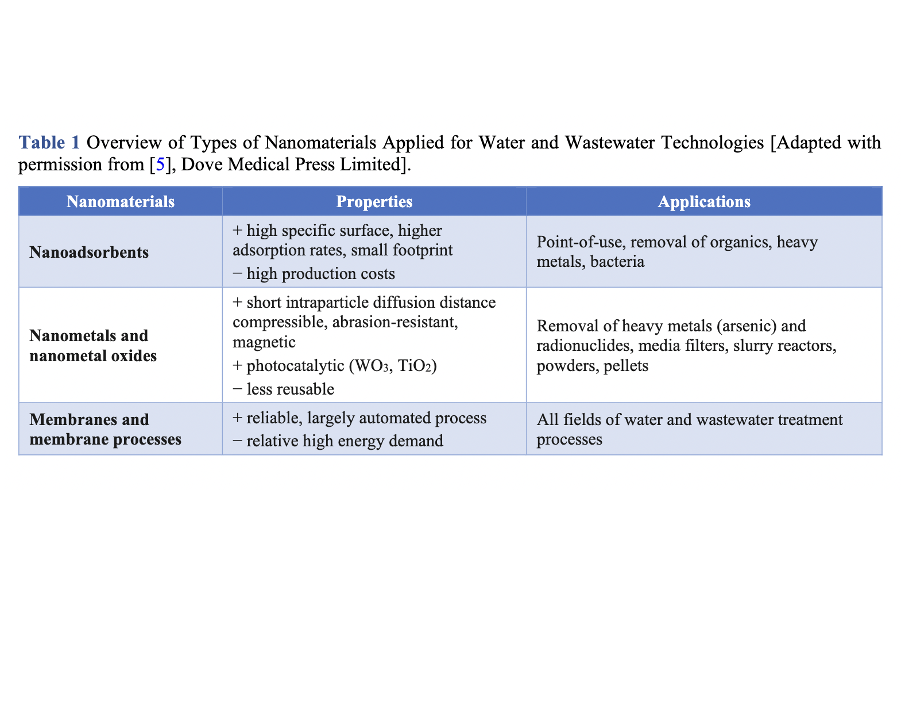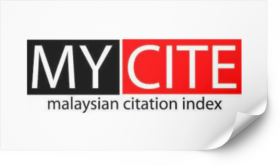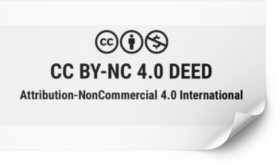Promises and Pitfalls of Metal Oxide Nanoparticles for Water Purification: A Sustainable Innovation or a Hidden Hazard?
DOI:
https://doi.org/10.37934/progee.30.1.2632Keywords:
Water purification, Nanomaterials, Metal oxide nanoparticles (MONPs), Nano-infused nets (NINs), Sustainability, NanotoxicityAbstract
Water, an indispensable resource in sustaining life, necessitates pursuing optimal purification processes amidst the rising concern of water insecurity. Technological advancements, particularly through integrating nanomaterials into separation technology, have made a significant leap in the area of water purification. This paper focuses on the application of metal oxide nanoparticles (MONPs) in separation technologies, and their incorporation into nano-infused nets (NINs), which showed significant enhancement to the filtration efficiency. While NINs hold significant promise for water solutions, concerns about potential environmental impact and health risks require further investigation and careful consideration. This opinion paper explores the benefits, challenges, public concerns and ethical considerations surrounding the use of MONPs in water purification, emphasising the need for responsible implementation and international regulations that facilitate their sustainable and ethical use in water purification.
References
Icon LifeSaver, Portable water purification technology, 2021. https://iconlifesaver.com/about-us/our-technology/ (accessed February 18, 2024).
Nanografi Nano Technology. Water purification and nanotechnology, 2021.
https://nanografi.com/blog/water-purification-and-nanotechnology/ (accessed February 18, 2024).
Argonide Corporation. Nanoceram filters, Argonide Advanced Water Filtration Systems, 2018.
https://www.argonide.com/products/nanoceram-electropositive-water-filters (accessed February 18, 2024).
LG Chem, NanoH2O RO Membranes. Main | LG water solutions, 2023.
https://www.lgwatersolutions.com/en/main (accessed February 18, 2024).
I. Gehrke, A. Geiser, A. Somborn-Schulz, Innovations in nanotechnology for water treatment, Nanotechnology, Science and Applications 8 (2015) 1–17. https://doi.org/10.2147/NSA.S43773.
Y. Shi, Y. Huang, Physiological, biochemical, and molecular performance of crop plants exposed to metal-oxide nanoparticles. Engineered Nanomaterials for Sustainable Agricultural Production, Soil Improvement and Stress Management (2023) 25-69. https://doi.org/10.1016/B978-0-323-91933-3.00016-7.
T. Su, C. Lai, S. Liou, W. Wu, O-169 longitudinal changes of oxidative and methylated DNA damage among workers handling engineered metal oxides nanoparticles, Occupational and Environmental Medicine 80 (2023) A13.2-A13. https://doi.org/10.1136/OEM-2023-EPICOH.32.
W.T. Wu, L. Li, T. Tsou, S. Wang, H. Lee, T. Shih, S. Liou, Longitudinal follow-up of health effects among workers handling engineered nanomaterials: A panel study. Environmental Health 18 (2019) 107. https://doi.org/10.1186/s12940-019-0542-y.
T. Rasheed, F. Kausar, S. Shafi, M. Bilal, Nanosorbents for heavy metals removal, Nano-Biosorbents for Decontamination of Water, Air, and Soil Pollution (2022) 163–186. https://doi.org/10.1016/b978-0-323-90912-9.00008-3.
I. Levchuk, M. Sillanpaa, Titanium dioxide–based nanomaterials for photocatalytic water treatment, Advanced Water Treatment (2020) 1–56. https://doi.org/10.1016/b978-0-12-819225-2.00001-6.
V.P. Parvathi, D.A. Jency, M. Umadevi, SERS nanosensors for organic compounds contaminated soils, Nanomaterials for Soil Remediation (2021) 259–284. https://doi.org/10.1016/b978-0-12-822891-3.00013-x.
R. Sharma, Nanotechnology: an approach for water purification-review, IOP Conference Series: Materials Science and Engineering 1116 (2021) 012007. https://doi.org/10.1088/1757-899x/1116/1/01200.
V. Seib, S. Thiel, M. Eichelbaum, Preparation and Real World Applications of Titania Composite Materials for Photocatalytic Surface, Air, and Water Purification: State of the Art, Inorganics 10 (2022) 139. https://doi.org/10.3390/inorganics10090139.
Z.M. Mumtaz, N. Hussain, H.M. Husnain Azam, Applications of novel nanomaterials in water treatment, Nanomaterials for Bioreactors and Bioprocessing Applications (2023) 217–243. https://doi.org/10.1016/b978-0-323-91782-7.00002-3.
Mohd.A.H. Ansari, M.E. Khan, A. Mohammad, M.T. Baig, A. Chaudary, Mohd. Tauqeer, Application of nanocomposites in wastewater treatment, Nanocomposites-Advanced Materials for Energy and Environmental Aspects (2023) 297–319. https://doi.org/10.1016/b978-0-323-99704-1.00025-4.
A.A. El-Samak, H. Rahman, D. Ponnamma, M.K. Hassan, S.J. Zaidi, M.A.A. Al-Maadeed, Role of metal oxide nanofibers in water purification, Metal Oxide-Based Nanofibers and Their Applications (2022) 173–190. https://doi.org/10.1016/b978-0-12-820629-4.00001-1.
A.M. Mikelonis, L.S. Rowles, D.F. Lawler, The effects of water chemistry on the detachment and dissolution of differently stabilized silver nanoparticles from ceramic membranes, Environ. Sci.: Water Res. Technol. 6 (2020) 1347–1356. https://doi.org/10.1039/c9ew01141b.
S.I.L. Gomes, C.P. Roca, S. Pokhrel, L. Mädler, J.J. Scott-Fordsmand, M.J.B. Amorim, TiO2 nanoparticles’ library toxicity (UV and non-UV exposure) – High-throughput in vivo transcriptomics reveals mechanisms, NanoImpact 30 (2023) 100458. https://doi.org/10.1016/j.impact.2023.100458.
X. Wang, X. Cui, Y. Zhao, C. Chen, Nano-bio interactions: the implication of size-dependent biological effects of nanomaterials, Sci. China Life Sci. 63 (2020) 1168–1182. https://doi.org/10.1007/s11427-020-1725-0.
H. Bahadar, F. Maqbool, K. Niaz, M. Abdollahi, Toxicity of Nanoparticles and an Overview of Current Experimental Models, Iranian Biomedical Journal 20(1) (2016) 1-11.
https://doi.org/10.7508/ibj.2016.01.001.
A.A. Sembada, I.W. Lenggoro, Transport of Nanoparticles into Plants and Their Detection Methods, Nanomaterials 14 (2024) 131. https://doi.org/10.3390/nano14020131.
Y.P. Yan, Y.D. Tang, B. Wan, X.M. Wang, F. Liu, X.H. Feng, Impact of Size on Environmental Behavior of Metal Oxide Nanoparticles. Chinese Journal of Environment Science, 39(6) (2018) 2982-2990. https://doi.org/10.13227/j.hjkx.201710245.
T.K. Darlington, A.M. Neigh, M.T. Spencer, O.T.N. Guyen, S.J. Oldenburg, Nanoparticle characteristics affecting environmental fate and transport through soil, Enviro Toxic and Chemistry 28 (2009) 1191–1199. https://doi.org/10.1897/08-341.1.
Y. Zhu, J. Wu, M. Chen, X. Liu, Y. Xiong, Y. Wang, T. Feng, S. Kang, X. Wang, Recent advances in the biotoxicity of metal oxide nanoparticles: Impacts on plants, animals and microorganisms, Chemosphere 237 (2019) 124403. https://doi.org/10.1016/j.chemosphere.2019.124403.
A. Boyadzhiev, D. Wu, M.-L. Avramescu, A. Williams, P. Rasmussen, S. Halappanavar, Toxicity of Metal Oxide Nanoparticles: Looking through the Lens of Toxicogenomics, IJMS 25 (2023) 529. https://doi.org/10.3390/ijms25010529.
C. Mutalik, Nivedita, C. Sneka, D.I. Krisnawati, S. Yougbaré, C.-C. Hsu, T.-R. Kuo, Zebrafish Insights into Nanomaterial Toxicity: A Focused Exploration on Metallic, Metal Oxide, Semiconductor, and Mixed-Metal Nanoparticles, IJMS 25 (2024) 1926. https://doi.org/10.3390/ijms25031926.
A.H. Mandal, S. Ghosh, D. Adhurjya, P. Chatterjee, I. Samajdar, D. Mukherjee, K. Dhara, N.C. Saha, G. Piccione, C.R. Multisanti, S. Saha, C. Faggio, Exploring the impact of zinc oxide nanoparticles on fish and fish-food organisms: A review, Aquaculture Reports 36 (2024) 102038. https://doi.org/10.1016/j.aqrep.2024.102038.
A.K. Mishra, R. Das, S. Sahoo, B. Biswal, Global regulations and legislations on nanoparticles usage and application in diverse horizons, Comprehensive Analytical Chemistry (2022) 261–290. https://doi.org/10.1016/bs.coac.2021.12.004.
R. Kumari, K. Suman, S. Karmakar, V. Mishra, S.G. Lakra, G.K. Saurav, B.K. Mahto, Regulation and safety measures for nanotechnology-based agri-products, Front. Genome Ed. 5 (2023). https://doi.org/10.3389/fgeed.2023.1200987.
G.I. Sayed, H. Alshater, A.E. Hassanien, Predicting the potential toxicity of the metal oxide nanoparticles using machine learning algorithms, Soft Comput 28 (2024) 10235–10261. https://doi.org/10.1007/s00500-024-09774-0.

Downloads
Published
How to Cite
Issue
Section
License
Copyright (c) 2025 Progress in Energy and Environment

This work is licensed under a Creative Commons Attribution-NonCommercial 4.0 International License.











